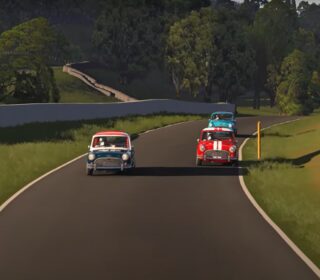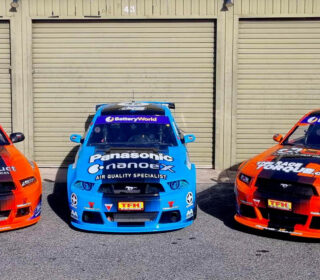Noise and Motorsport Venues: A Deep Dive
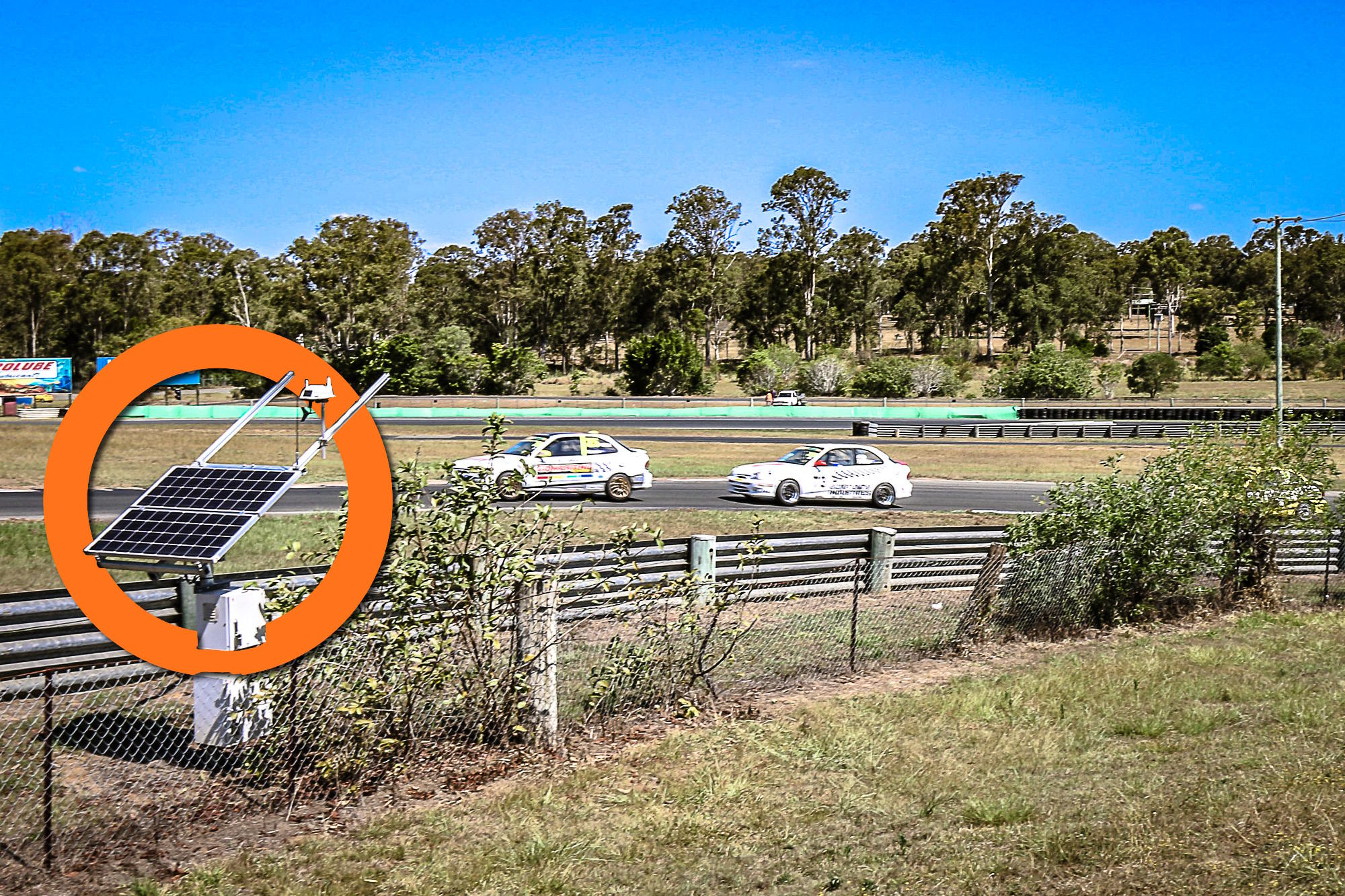
Noise may be the natural byproduct of motorsport, but it’s also one of its biggest hindrances.
On multiple occasions over the past fortnight, the subject has hit the headlines, for better or worse.
On Monday, we took a deep dive into the latest developments at Wakefield Park, now One Raceway, to resolve the decades-long noise issues at the rural Goulburn circuit.
A little further north, the streets of Newcastle have ground to a halt as a fixture on the Supercars calendar – although the blame for the pin finally being pulled on the project can be put at the feet of bureaucracy, calls of protest from residents at the beachside end of Newcastle have been vocal, with the minority’s grumblings ultimately telling.
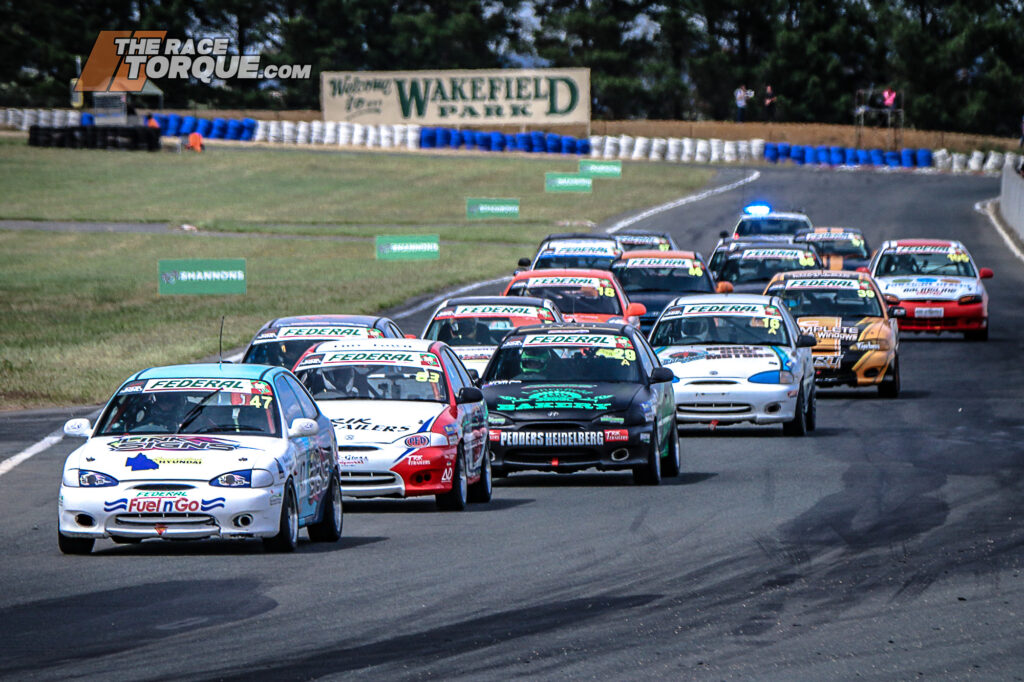
The Balancing Act
Motorsport is an inherently noisy business – and it’s the sort of thing that non-motorsport people don’t want in their backyard.
There is a genuine quandary for motorsport in finding places to race – build close to society, and there will be complaints, or if you establish a facility far from civilisation, you won’t be able to attract patrons.
While governing bodies such as Motorsport Australia have their own set of rules regarding noise, for councils approving prospective venues, there are no clear and consistent guidelines across the country that account for noise measurements, the number of events that should be permissible, the timing of events, their spread on the calendar and more.
For instance, in Queensland, the Department of National Parks, Sport and Racing have released a guide for planning shooting and motorsport facilities, with advice that amounts to one paragraph, while the WA Government’s Department of Environment Regulation’s Guide to Management of Noise from Motorsport Venues (1997), stretches out to 30 pages.
The ACT’s Motorsports Noise Environmental Policy is a 13-page document.
It should also be noted that there are multiple methods for measuring noise, so often, a like-for-like comparison between the rules governing venues is difficult to make.
When a new venue is being developed, it is common practice for thorough noise reports to be commissioned, as was the case in the planned venue to the south of Pakenham, with the acoustics report walking through the various challenges associated with laying out a greenfield site.
This document analysed all potential uses for the site, from competition vehicles, road cars, go-karts, outdoor clay shooting, music concerts, helicopter noise, public address systems and other commercial uses, such as hotels, bars and restaurants, taking into account nearby properties within earshot.
We have previously investigated a similar scenario when looking at the planning process behind a prospective Rockhampton facility, which also never came to fruition.
As witnessed in the example of Wakefield Park, there are typically compromises to be made on multiple fronts for all involved.
Firstly, there must be an onus on competitors to ensure that their vehicles comply with the prevailing noise constraints.
For circuits, they need to guarantee the optimum noise mitigation measures are in place, that competitors indeed comply with the rules, that all necessary reporting is carried out, and strong relationships are fostered with locals and the relevant authorities, such as by publishing calendars of events.
Residents have to accept that there will be times of noise, while councils have to balance the interests of what are typically significant drivers of regional tourism against the wishes of rate-paying locals.
A governing facet for circuits is that they must comply with the conditions under which they have been allowed to operate in the first instance, regarding their respective planning permission or other bespoke consent.
It’s a subject we analysed in depth last year, with case studies into how Wakefield Park and the Gold Coast Motorsport Training Centre thrived and grew their businesses well beyond the scope that they had permission for.
However, noise and racetracks are absolutely nothing new, with the sport engaging in battles with residents and governments a regular occurrence over time.
One of the earlier examples of noise and motorsport not mixing on these shores was covered in our report on the 1930s bid to host motorsport in Albert Park, a move that raised the ire of local hospitals in the area.
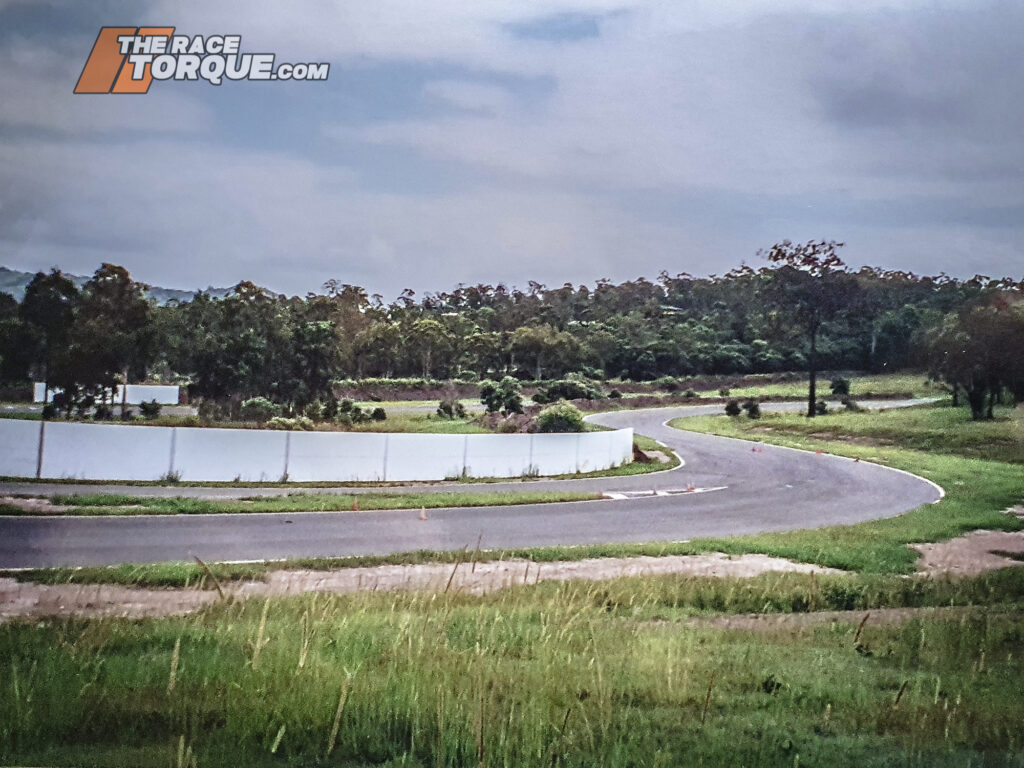
The Curious Case of Darlington Park
During the booming 1980s, one facility halfway between Brisbane and the Gold Coast stirred up a hornet’s nest of controversy.
We covered the story of Darlington Park in three parts – it’s one of our favourite topics, but at its core were long-running noise issues.
Our second leg of the feature focused on the various dramas faced by motorsport venues on the Gold Coast, with go-kart and motocross facilities coming into the crosshairs, with red tape tugging at their very existence.
In the closing days of the barebones facility, Darlington Park became the target of multiple noise violations, with users put under pressure to muffler cars and keep sound to a minimum.
However, it was ultimately discovered that the noise meter, which was the source of many violations, was being triggered when there was no on-track activity.
As it transpires, a device located off-site on a neighbouring property spiked whenever a truck from the nearby quarry thundered by, or it could be set off by the squawk from a crow in close proximity.
Sadly, the untimely death of Tony Stephens, the larger-than-life custodian of the venue, finally scuttled any opportunity to save the situation.
If the locals didn’t like the low-use race track, they probably really don’t like the massive industrial estate that replaced it…
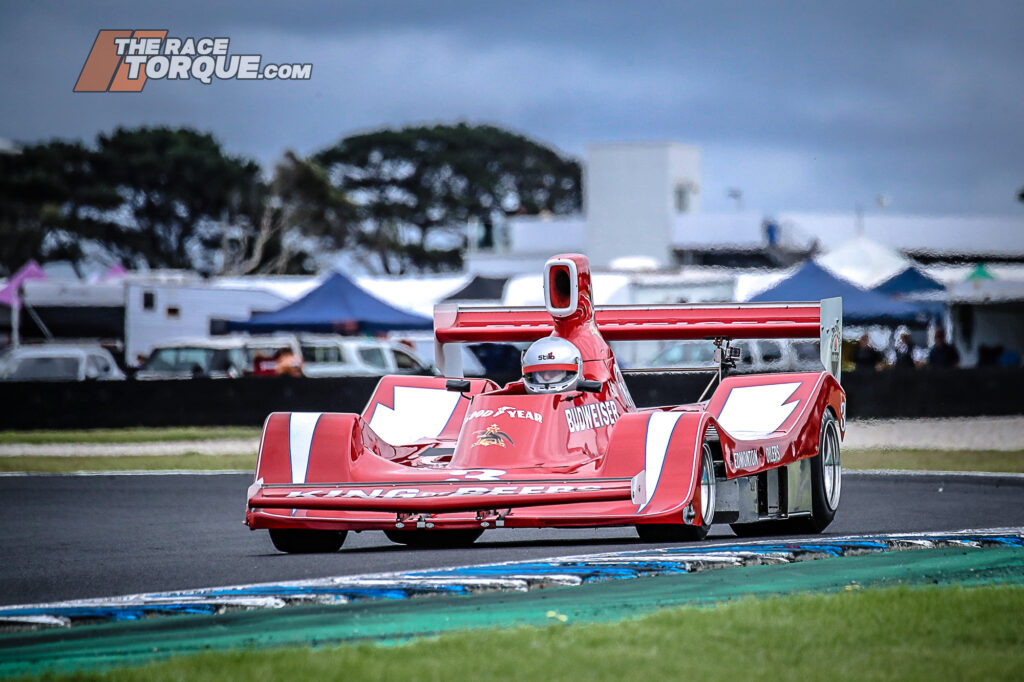
The Phillip Island Case
The rolling green hills of Phillip Island are almost too nice to be home to one of the country’s premier motorsport venues.
However, the Phillip Island Grand Prix Circuit has found a way of co-existing with its environment, which features wildlife-filled cliffs that cascade into Bass Strait, including the nearby Pyramid Rock, while sleepy surfside villages are also located in the area.
Stories of grievances pop up from time to time in the local Phillip Island press, with one story noting that in a 2015 EPA report, the circuit was the third highest source of noise complaints in the state, behind loud music and industrial noise.
Another piece noted that the larger international events, which, in theory, should be the loudest, are the easiest to digest for locals, with crowds trackside and temporary infrastructure absorbing much of the sound.
The circuit, however, is completely transparent in its use and noise levels, with data uploaded directly to the facility’s website in conjunction with prevailing weather conditions, featuring wind directions.
Here, four different brackets are laid out with peak noise levels, examples of the activities allowed for each noise class, and a breakdown of the number of weekend and midweek days targeted throughout each year.
Leading the charge are international events, such as MotoGP and World Superbikes, which are allowed over 95dB, and are limited to 21 days per year.
Class B days make up the bulk of the calendar, with 160 days permitting up to 95dB, encompassing national events, motorcycle ride days, the overflow of international events and club sprints.
Class C is up to 75dB, for club sprints, vehicle launches, plus driver and rider training, which accounts for 112 days per year, while 72 quiet days are required, which allow for low-impact use such as bicycles, running and cross-country styled events, plus the go-karts, which with their mufflers are barely audible.
When users come to Phillip Island, they know to come prepared with appropriate muffling, plus users know to adhere to the strict engine start times – and typically, everyone plays the game.
At the most recent state championship event at the facility, the peak noise readings over the three days were 86dB, 79dB and 84.1dB respectively, which were actually overshadowed by midweek driving training on the Wednesday and Thursday prior, where peak readings of 86dB and 87.6dB were recorded.
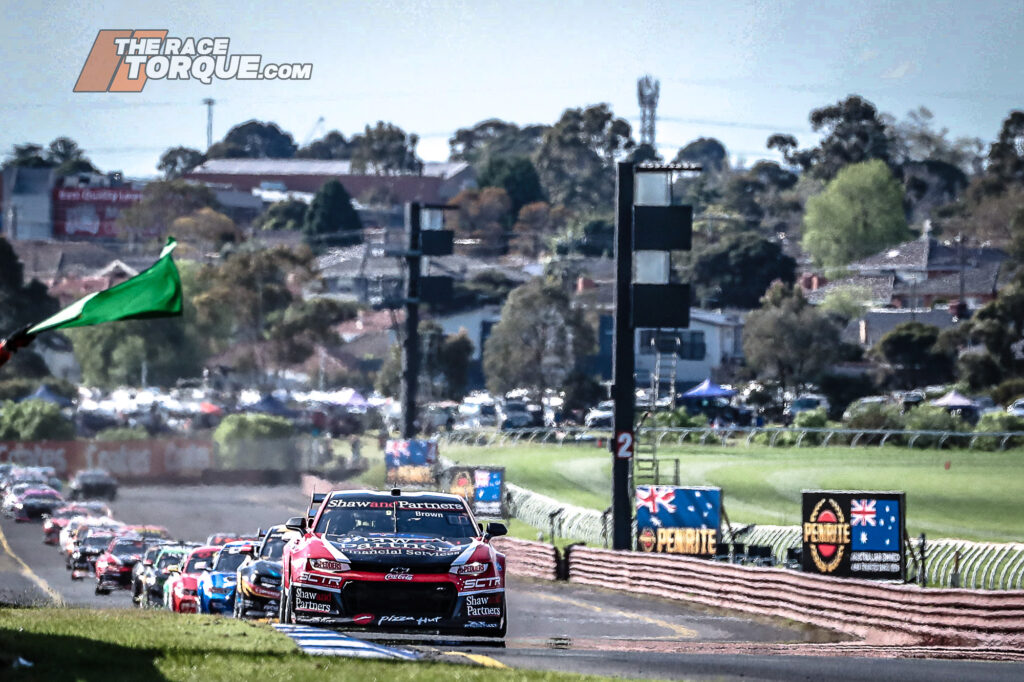
The Sandown Case
Sandown Raceway is the ultimate example of urban living that meets the sound of motorsport, with the nearest property only 130m away from the racing surface at turn four.
In recent times, extensive noise barriers have been erected around the venue to mitigate the issues.
All told, the venue is permitted to host five events per year up to the 95dB limit (Supercars, Speedseries, Historics and two Vic State Rounds), with other activities not to break a 75 dB limit, with on-track times typically between 9am and 6pm.
Keep in mind that a considerable number of days are devoted to horse racing, plus other exhibitions and fairs which utilise the grounds.
During motorsport events, manned noise monitoring equipment can be found between the pits and the grandstand, some 30m back from the racetrack.
The future of Sandown, however, remains up in the air, with the venue’s custodians, the Melbourne Racing Club (MRC), still working through the process of figuring out what to do with the site.
Last year, The Race Torque took a deep dive into the all-encompassing development application filed by the MRC, which would potentially see the entire site converted into 7,500 dwellings for 16,000 residents.
Even with a pro-Sandown board in place with the MRC, there is no guarantee that motorsport will remain on the long-term agenda at the venue, which may ultimately still mix horse racing with surrounding residential developments on the expansive 112.25-hectare site.
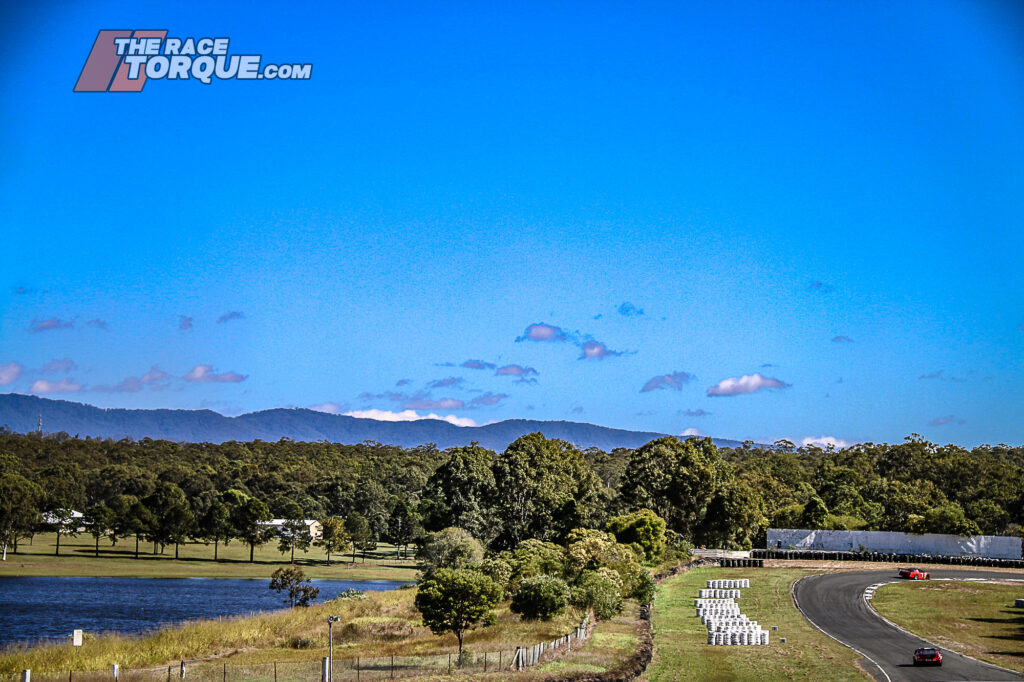
The Lakeside Case
On these pages, we have covered in depth the long-term noise issues at Lakeside Park in Queensland.
When the venue was shuttered in 2001, it was declared that racing would never again be held at the historic circuit, however, it reemerged from its slumber in 2008.
Our reporting from the time noted a strict 92.2dB noise limit for the initial trial meetings, which resulted in racing that was genuinely quiet.
One outcome from the early meets was the discontinuation of the venue’s public address system, as the commentators proved to be louder than the racecars!
At the time of that re-opening, it was noted by the council that the venue was the subject of only six noise complaints from its initial 40 years of operation, a number which ballooned to over 1,000 in its second coming.
In 2020, our deep dive into the facility’s NIMBY issue recounted the rollercoaster ride that the track encountered, from racing being suspended in 2018 to its return to action, and the lodgment of a new development application that would have seen the facility recognised as a sports ground, rather than an outdoor entertainment venue, which carries differing noise monitoring conditions.
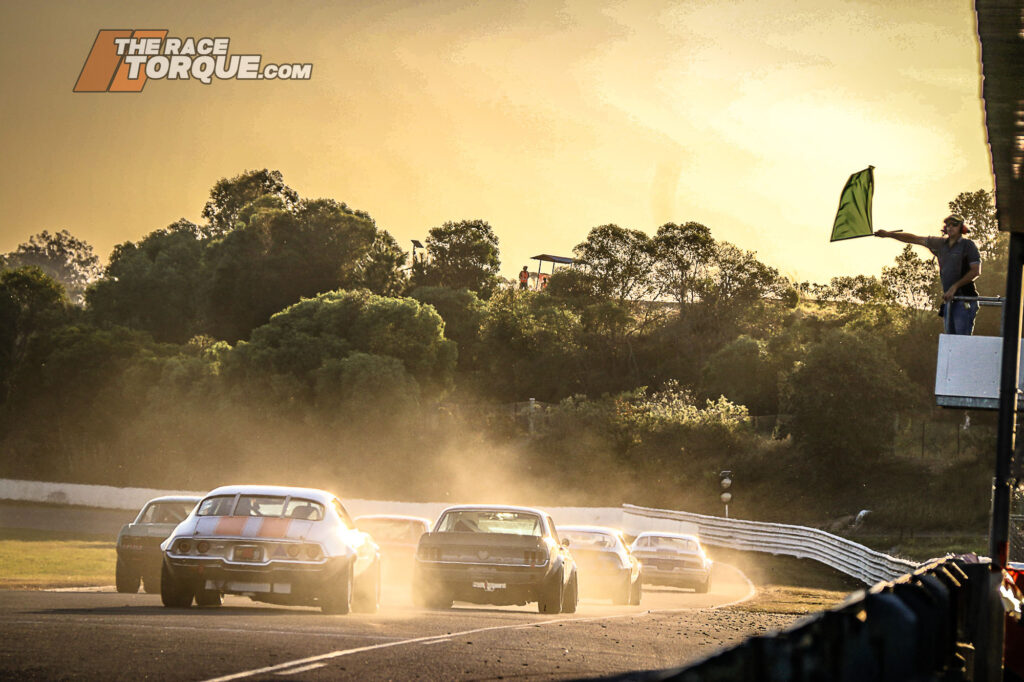
Sound Advice
These examples merely scratch the surface of the various issues that have impacted the sport around the country, in the past, present and future.
Sometimes motorsport is the victim, while on other occasions, it is sadly at fault.
The lesson is that a lot of learnings on the subject already exist in the motorsport realm – with cooperation from all stakeholders, seemingly a sensible path of action.



